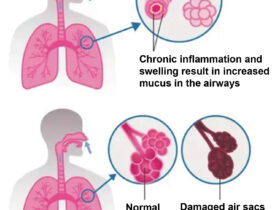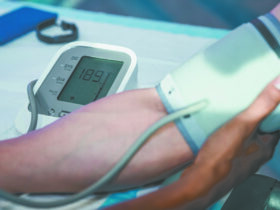 More than 16 million Americans have heart disease, almost 8 million already have had a heart attack and 7 million have had a stroke. Cardiovascular disease (CVD) is the single largest cause of all deaths in the United States, killing more than 800,000 people a year.
More than 16 million Americans have heart disease, almost 8 million already have had a heart attack and 7 million have had a stroke. Cardiovascular disease (CVD) is the single largest cause of all deaths in the United States, killing more than 800,000 people a year.
CVD includes narrow or blocked arteries in and around the heart (coronary heart disease), high blood pressure (hypertension), heart attack (acute myocardial infarction), stroke and heart-related chest pain (angina pectoris). Smoking is a major cause of CVD.
Even people who smoke fewer than five cigarettes a day show signs of early stages of CVD. The risk of CVD increases when more cigarettes a day are smoked, and when smoking continues for many years.
Exposure to secondhand smoke can increase the risk for a heart attack or stroke. More than 33,000 nonsmokers die every year in the United States from coronary heart disease caused by exposure to secondhand smoke.
Peripheral Arterial Disease
Blood vessels are found throughout the body and carry oxygen to every organ. The oxygen makes it possible for organs to do the work needed to keep ‘the body healthy and working correctly. Cigarette smoke makes cells lining blood vessels swell so that the vessels become narrower, reducing the flow of blood. Even smoking every now and then, or inhaling someone else’s smoke, damages blood vessels.
Atherosclerosis, or hardening of the arteries, occurs when artery walls thicken and the opening inside the artery narrows. Peripheral arterial disease (PAD) or peripheral vascular disease (PVD) occurs when arteries that supply the legs, feet, arms, or hands become narrow, reducing blood flow. Without normal blood flow, people with PAD may have pain when they walk, and cells and tissue can die from lack of oxygen. In extreme cases, gangrene can develop and the infected limb may have to be removed. Smoking is the most common preventable cause of PAD.
Coronary Heart Disease
Components in the blood, called platelets, stick together along with proteins to form clots. Clotting prevents blood loss and infection after an injury. Chemicals in cigarette smoke cause blood to thicken and form clots inside veins and arteries, even when clotting isn’t needed to prevent bleeding or infection. Smoking also promotes the formation of plaque in the walls of arteries and clots can form where there is plaque. This is especially dangerous when arteries are already narrowed from smoking, because the clots can easily block those arteries. When arteries are blocked, the oxygen to nearby organs is cut off. Coronary heart disease occurs when arteries that carry blood to heart muscles are blocked by clots. This blockage can lead to a heart attack and sudden death.






